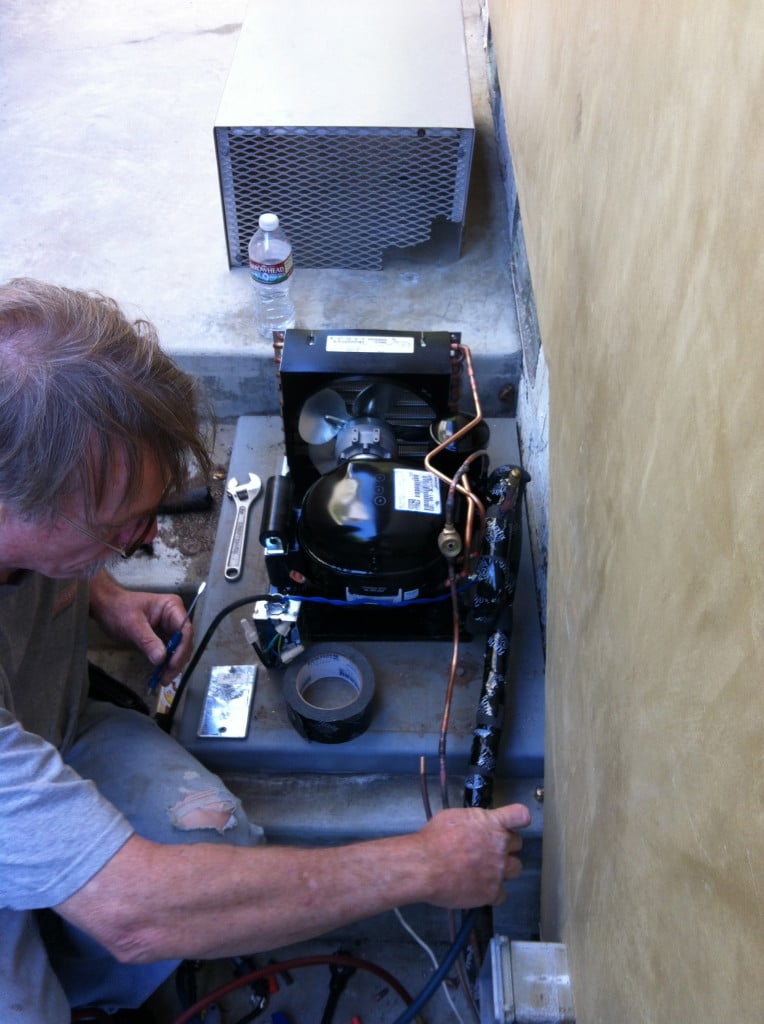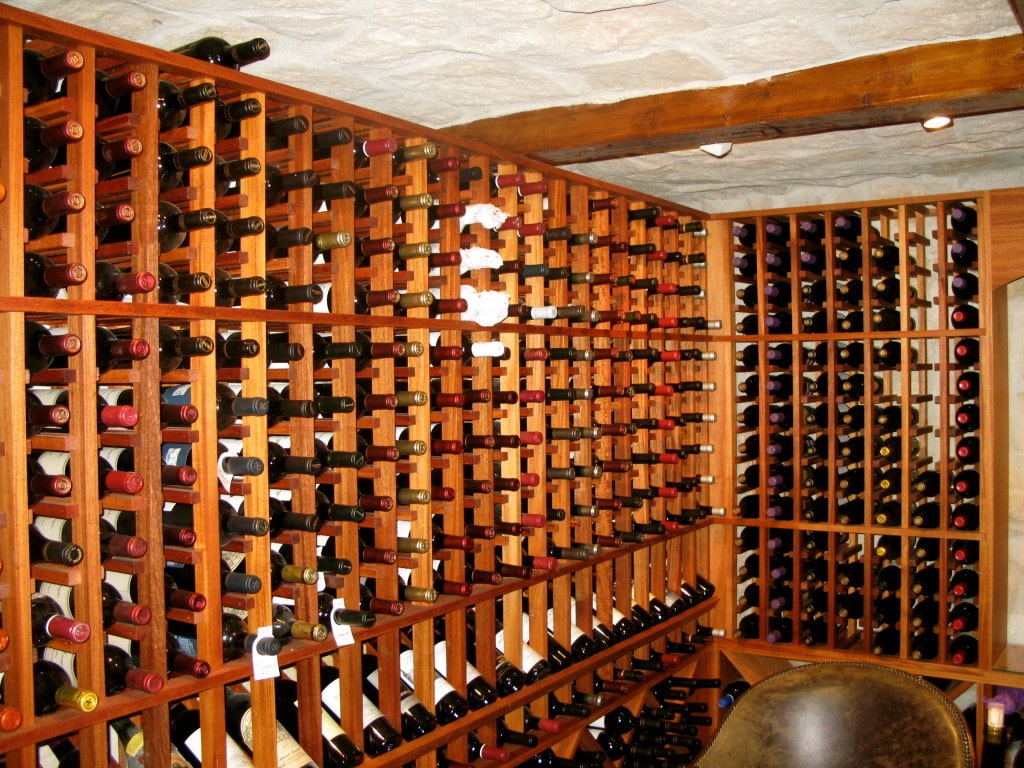Outdoor Installation of the Residential Wine Cellar Cooling Unit
A recently completed residential wine cellar cooling installation project from Arctic Metalworks demonstrates the importance of installing a condensing unit in an open area.
The wine cellar refrigeration unit California installation project was for the former Manhattan Beach mayor, Mitch Ward. The Arctic team was contracted by RJ at Gunderlock Development.
Arctic Metalworks recommended an outdoor installation, for efficient operation. Since the homes in Manhattan Beach are within a few feet of one another, the contractor was concerned about the noise the condensing unit might generate when placed outdoors.
Although the Arctic team assured them that it wouldn’t be an issue, they had the equipment placed in a mechanical room with a 4″ ventilation fan for heat dissipation. The installation team at Arctic Metalworks had to replace the existing ventilation fan with something bigger, in order to dispel heat from the room.
However, that course of action failed to allow the residential wine cellar cooling unit work properly. So, the Arctic team decided to move the unit outdoors (to one side of the yard), to enable the wine cellar climate control systems to function properly and efficiently.
Installing the Condensing Unit and the Evaporator
The condensing unit is the heat generating component of wine cellar cooling systems, and thus requires a space that is suited to the removal of heat exhaust and fan noise.
The evaporator, which is the quietest part of the refrigeration equipment, is usually installed inside or near the custom wine room. The evaporator unit and condensing unit are connected by copper tubing and electrical wiring.
Wine Cellar Cooling Systems – Why are they considered one the most important wine cellar elements?
A climate control system is one of the most crucial elements of an actively cooled wine room. Wine cellar cooling systems are engineered to help achieve stable temperature and humidity levels, in order for wines to mature to their full potential.
A wine storage space with proper insulation, a vapor barrier, and a climate control system in place will create the best possible wine storage environment.
Three Types of Wine Cellar Cooling Systems
The three primary classifications of wine cellar cooling systems are self-contained, or, ‘through the wall’ units, ducted split systems, and ductless split systems. Among the three units, the ductless split system is considered the most efficient at cooling a wine cellar space.
Ductless and split units house the evaporator and condenser in separate units. This allows flexibility in installation options.
A ductless split residential wine cellar cooling system consists of an evaporator unit, and condensing unit. Splitting them up allows the noisiest part of the refrigeration equipment (the condensing unit) to be located remotely.
This set-up promotes ultra-quiet operation, and minimizes heat exhaust. Keep in mind that the condensing part of the cooling system needs to be installed in a well-ventilated location to effectively dissipate noise and heat.
Arctic Metalworks is the leading manufacturer and provider of wine cellar climate control systems in Southern California. They design and build custom wine cellar refrigeration units in California, for both residential and commercial applications, as well as provide service and maintenance for cooling equipment.
Contact Arctic Metalworks for wine cellar refrigeration services and wine cellar construction projects.


